The term “dietary fibre” is ubiquitous when it comes to health-related discussions and advice. Dieticians insist on a high-fibre diet for diabetics and people with high cholesterol. Paediatricians advise moms to include more dietary fibre in their kids’ diets when their kids suffer from constipation. Weight loss diets also focus on including high fibre.
What is this dietary fibre all about and how does it help to prevent or attenuate chronic health problems?
This post will deal about everything you need to know about dietary fibre. It will touch upon the following:
- Types of dietary fibre
- Functions of dietary fibre
- Health benefits of dietary fibre
- What happens when there is excess intake of fibre?
- Sources of dietary fibre
- Some tips to include fibre in the diet
Dietary fibre is a polysaccharide, a type of complex carbohydrate, that the body can’t digest. Fibre cannot be broken down into simple sugar molecules and hence it moves through the gut undigested. The examples of fibres are pectins, gums, mucilages, cellulose, hemicellulose, lignin, etc.
What Are the Types of Dietary Fibre?
Dietary fibre can be classified into soluble and insoluble fibre.
Soluble fibre
Soluble fibre is viscous with a gel-like quality and is soluble in water. This kind of fibre is fermentable and acts as food for gut bacteria (probiotics) that are beneficial to intestinal health. Thus, soluble fibre acts as a prebiotic. Soluble fibre also binds to cholesterol in the intestine and removes it from the body.
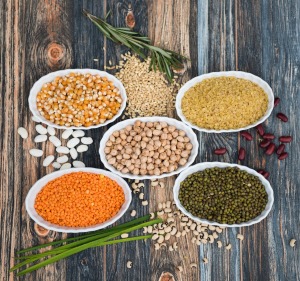
Examples of soluble fibre are pectin (found in the skins of fruits, covering of seeds, etc.), gums and mucilages. Soluble fibre is found in oats, barley, legumes and pulses is also soluble fibre.
Insoluble Fibre
Insoluble fibre is insoluble in water and hence travels down to the gut without breaking down. It can add bulk and weight to stool, thus making the stool easier to pass. This kind of fibre helps in regulating blood sugar levels by slowing down its absorption into the blood. It helps to relieve constipation as it speeds up the transit of food in the digestive tract.
Insoluble fibre is found in whole wheat, wheat bran, nuts, seeds and green leafy vegetables.
Functions of Dietary Fibre
1. Dietary fibre acts like a sponge and absorbs water. Due to this property, it makes the stools soft and bulky and facilitates their easy movement through the intestinal tract. Therefore, the stools are comfortably eliminated, thereby preventing constipation.
2. The intake of insoluble dietary fibre necessitates a lot of chewing or mastication. Mastication helps in breaking down the food bolus into smaller particles for ease of digestion. Dietary fibre also absorbs water, swells and thus increases the surface area of the food particles. Due to this, there is increased exposure of the food mass to enzymatic action and hence digestion improves.
3.Dietary fibre provides satiety (feeling of fullness). As foods containing fibre require more chewing and take time to digest, they provide a feeling of fullness and suppress hunger. Hence, persons trying to lose weight can include more of dietary fibre in their diet.
4. Soluble fibre binds bile acids and cholesterol and helps in their excretion. Hence, a high-fibre diet is recommended for people with high cholesterol.
Let’s now look at the various health benefits of dietary fibre.
Health Benefits of Dietary Fibre
1. Improves Gut Motility And Prevents Constipation
Dietary fibre, especially insoluble fibre, helps in improving gut motility, thereby helping in easy passage of stools for people suffering from constipation. Several studies involving constipated subjects fed with dietary fibre have confirmed the correlation between dietary fibre and gut motility.
2. Helps in Body Weight Reduction
Dietary fibre takes time to digest and hence it gives a feeling of fullness and keeps hunger pangs at bay. People aiming for weight loss should include more of fibre in their diet as it prevents them from overeating.
Evidence suggests a small reduction in abdominal fat deposition with increased fibre intake. This might indirectly cause some weight loss.
3. Helps in the Prevention of Metabolic Syndrome
Metabolic syndrome is a group of conditions that increase the risk of heart disease, stroke and diabetes mellitus.
Dietary fibre has been found to reduce the risk of metabolic syndrome. Studies have confirmed the association of high-fibre diet with improved insulin sensitivity, improved lipid profile and HbA1C (this test measures the 3-month average of blood sugar levels) and body weight. However, for reducing the risk of development of Type 2 diabetes, the results of large cohort studies showed that the consumption of insoluble cereal dietary fibre such as whole wheat, wheat brain and whole grains such as barley, millet, brown rice, red rice, quinoa, etc., was found to be more effective.
Overall, dietary fibre improved insulin sensitivity and overall metabolic health.
4. Dietary Fibre Helps in Maintaining a Good Balance of Healthy Gut Microorganisms (good bacteria)
Nowadays, there is a lot of focus is on the importance of maintaining a proper balance of gut microorganisms. This is because the gut bacteria (good bacteria) help in the various physiological functions of our body such as digestion, improving immunity, maintaining good mental health, etc.
Most of the chronic health issues of this century such as food allergies, food intolerance and autoimmune conditions, etc., are found to be caused due to an imbalance in the microorganisms in the intestine. Fortunately, this can be modified through lifestyle factors, especially through our diet. Dietary fibre, thorough its direct interaction with gut microorganisms, influences the microbial ecology and helps in maintaining a proper balance of good bacteria, thereby preventing chronic health issues.
5. Helps in Reducing Inflammation
Studies have shown that low-grade inflammation is associated with an increase in the risk of various diseases such as cardiovascular disease, diabetes, chronic kidney disease and cancer. Dietary fibre is said to possess inflammation reducing properties.
Multiple studies have shown an association between intake of cereal dietary fibre and lowering of inflammatory markers that cause inflammation. The anti-inflammatory effects of fibre are due to the production of short-chain fatty acids (SCFAs).
6. Helps Control Blood Sugar Levels
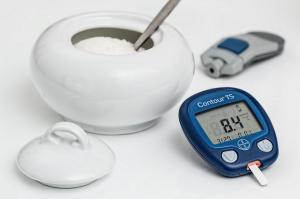
In people with diabetes, fiber, especially insoluble fiber, can slow down the absorption of sugar and help improve blood sugar levels. A healthy diet that includes insoluble fiber may also reduce the risk of developing Type 2 diabetes.
7. Helps in the Prevention of Cardiovascular Diseases
Studies conducted over several years have found that the intake of ultra-processed foods (foods lacking dietary fibre) was associated with a higher risk of overall CVD, coronary heart disease and cerebrovascular disease.

Also, as dietary fibre helps in reducing cholesterol levels, which is a major risk factor for cardiovascular diseases, it helps in its prevention. Foods such as flax seeds, avocados, etc., help in increasing HDL (good cholesterol) that is protective of the heart.
8. Helps in the Prevention of Colorectal Cancer
Colorectal cancer is the one of the most common types of cancer prevalent especially in Western countries like Europe and the US where their diets lack in fibre and contain more of processed foods.
Studies indicate that a diet that is rich in dietary fibre, particularly from cereals and fruit, reduces the occurrence of colorectal cancer.
What happens if there is excessive fibre intake?
1. Excess fibre can cause gas and other intestinal symptoms: Fibre-rich foods are good for your health but an excessive intake of fibre may result in intestinal gas, abdominal bloating and intestinal obstruction, if not accompanied by sufficient water intake. Also, fibre absorbs water and makes the stool bulky and to pass easily.
If fibre intake is increased suddenly, complaints such as cramping, diarrhoea and excessive intestinal gas are common. To minimise these effects, the fibre content of the diet should be gradually increased over a period of several weeks.
2. Excess fibre can interfere in nutrient absorption: Very high-fibre diets are linked with decreased absorption of minerals such as calcium, iron, zinc, etc. as dietary fibre binds with these minerals ansod forms insoluble salts, which are then excreted. This will interfere in the absorption of nutrients in the body.
3. High-fibre diet can trigger diarrhoea: Sometimes, eating too much fibre can cause diarrhoea. Foods such as bananas, spinach, oats, tomatoes, etc., when eaten in excess can cause an upset stomach.
4. High fibre can cause constipation: Contrary to the general belief, an excess of fibre, especially soluble fibre can interfere with the digestive system and result in constipation. Hence, striking a balance is always important.
Sources of Dietary Fibre
(Source: Nutritive Value of Indian Foods, National Institute of Nutrition, ICMR, Hyderabad)
In general, whole grains, green leafy vegetables and fruits are rich in dietary fibre. The following are the foods rich in dietary fibre under various food groups:
1.Cereal grains and products (fibre content per 100 gm of food)
Foxtail millet (8 gms); kodo millet (9.8 gms); little millet (7.6 gms); rice bran (4.3 gms)
2. Pulses and Legumes
Green gram, whole (4.1 gms); moth beans (4.5 gms); green peas (4 gms) peas, roasted (4.5 gms); rajma (4.8 gms)
3. Leafy Vegetables
Amaranth (6.1 gms); curry leaves (6.4 gms); colocasia leaves dried (16 gms);
4. Other Vegetables
Drumstick (4.8 gms); double beans (4.3 gms); figs, red (6.4 gms); lotus stem, dry(25 gms); turkey berry called as sundakai in Tamil (17.6 gms)
5.Fruits
Avocado (22.8 gms); guava, country (5.2 gms); passion fruit (9.6 gms); wood apple(5 mgs)
Condiments & Spices
Cardamom (20.1 gms); Chillies dry (30.2 gms); Corainder seeds (dhaniya) – 32.6 gms; Cumin seeds (12.1 gms); carom seeds (omum)-21.2 gms; Pepper dry (14.9 gms)
Tips To Add More Fibre To Your Diet
- Try to include high-fibre foods in all your meals as much as possible. If you have cereal for breakfast, choose cereals that have whole grain, bran or fibre in the ingredients. Nowadays, you also get millet based breakfast flakes in the supermarkets such as buckwheat flakes. These are available online too.
- Switch to whole grains. Consume at least 50% cereals in the form of whole grains. Look for breads that list whole wheat, whole-wheat flour or another whole grain as the first ingredient on the label and have at least 2 grams of dietary fiber a serving. Include millet-based preparations to your diet as they are rich in dietary fibre. Experiment with brown rice, wild rice, barley, whole-wheat pasta and bulgur wheat.
- Go for legumes such as beans, peas and lentils as they are excellent sources of fiber. Include preparations like rajma masala, sundal (a South Indian preparation made from legumes such as bengal gram whole, chickpeas, moong, whole, etc,. seasoned and tossed with grated coconut), etc. Make nachos with black beans, lots of fresh veggies, whole-wheat tortilla chips and salsa.
- Eat more fruit and vegetables. Try to eat five or more servings daily as fruits and vegetables are rich in dietary fibre.
KEY TAKEAWAYS
Dietary fibre is a kind of complex carbohydrate that cannot be digested by our body. It is classified into soluble and insoluble fibre. Soluble fibre is present in legumes & pulses, oats, barley, etc. Insoluble fibre is found in whole grains, leafy vegetables, wheat bran, nuts & seeds, etc.
Dietary fibre helps in relieving constipation, reduces cholesterol levels in the blood, helps in controlling blood sugar levels, helps in preventing cardiovascular diseases, helps in maintaining proper balance of useful gut bacteria, etc.
Excess intake of dietary fibre may cause diarrhea, will hinder the absorption of certain minerals and can cause bloating and other intestinal symptoms.
Hope this blog post created awareness about all aspects of fibre. Keep posting your feedback under the "Comments" section.


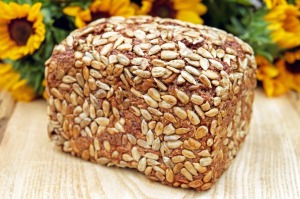


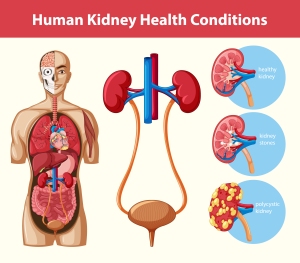
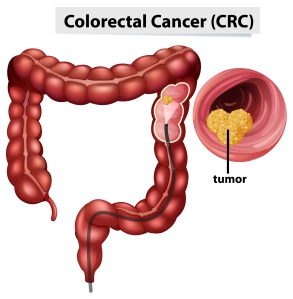
Very much informative about dietary fibres.
LikeLike
Thanks Srividya. Glad you found it informative.
LikeLike
very nice article arthi
LikeLike
Thank you Madhuri.
LikeLike
Very well explained.
LikeLike
Thanks Pavithra
LikeLike